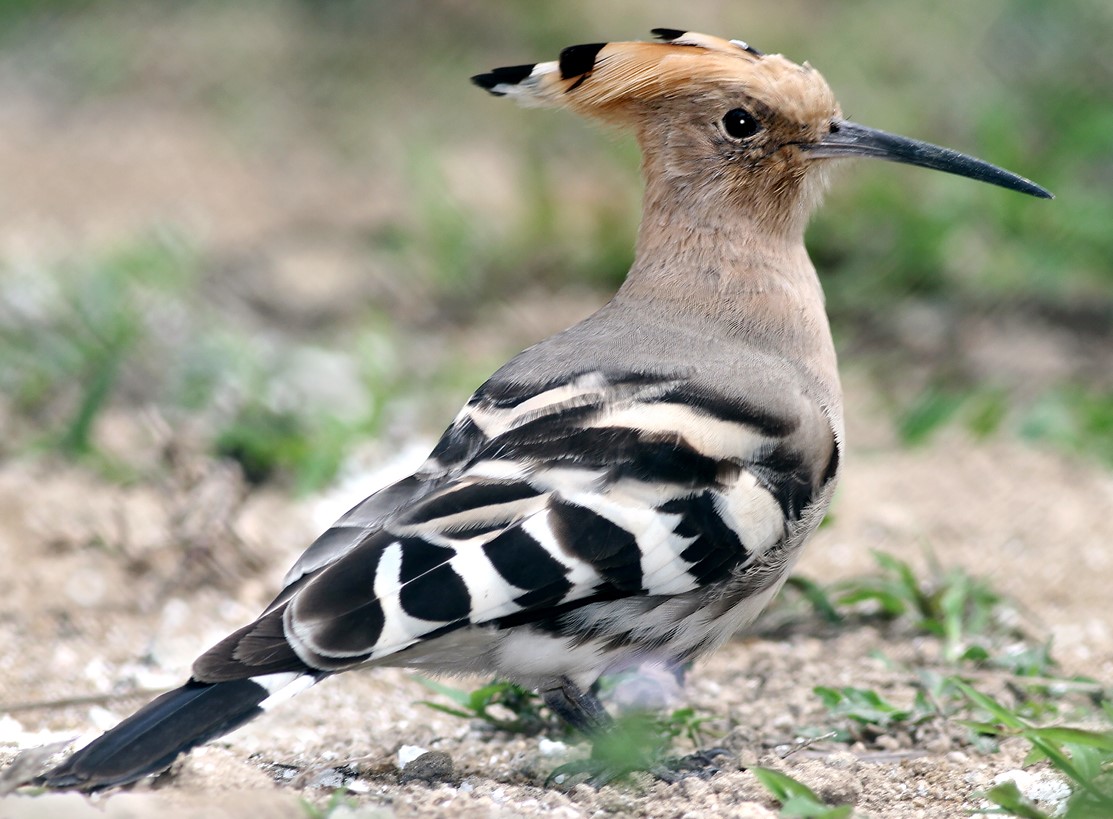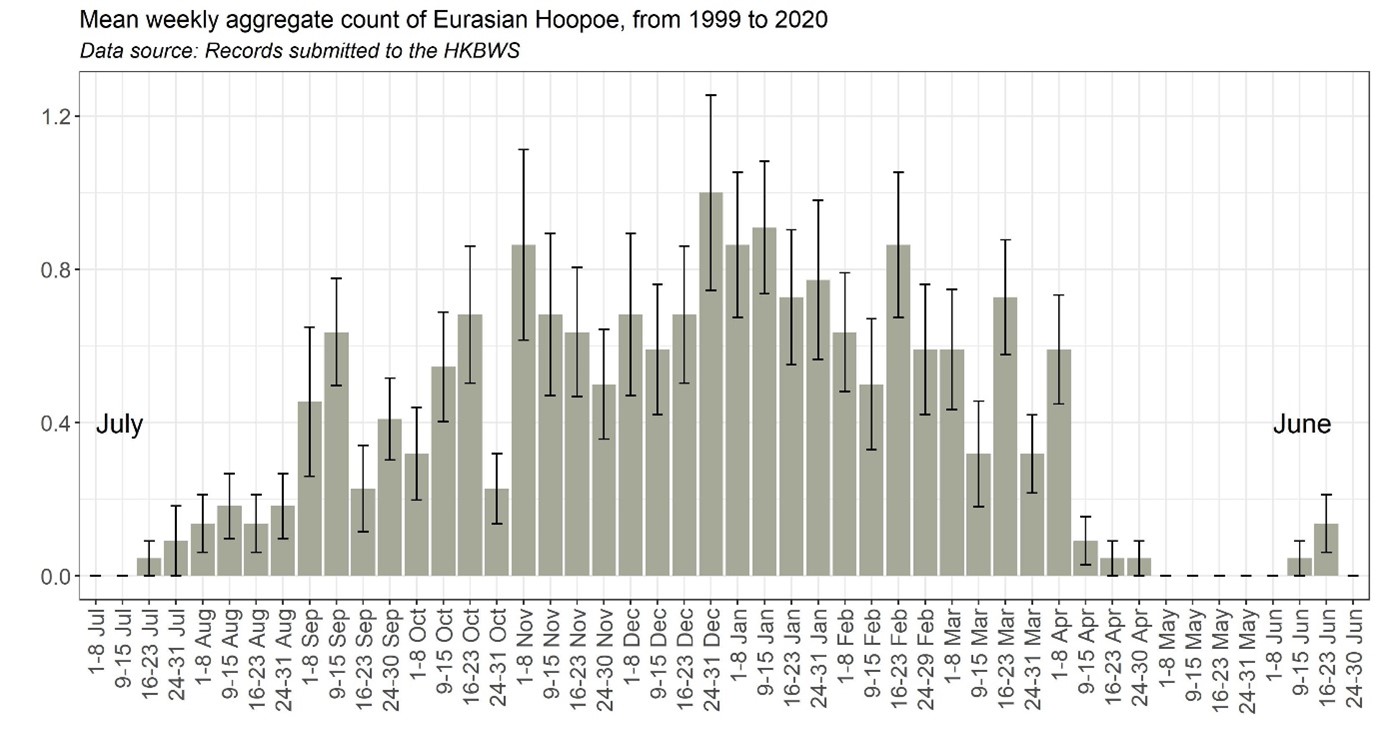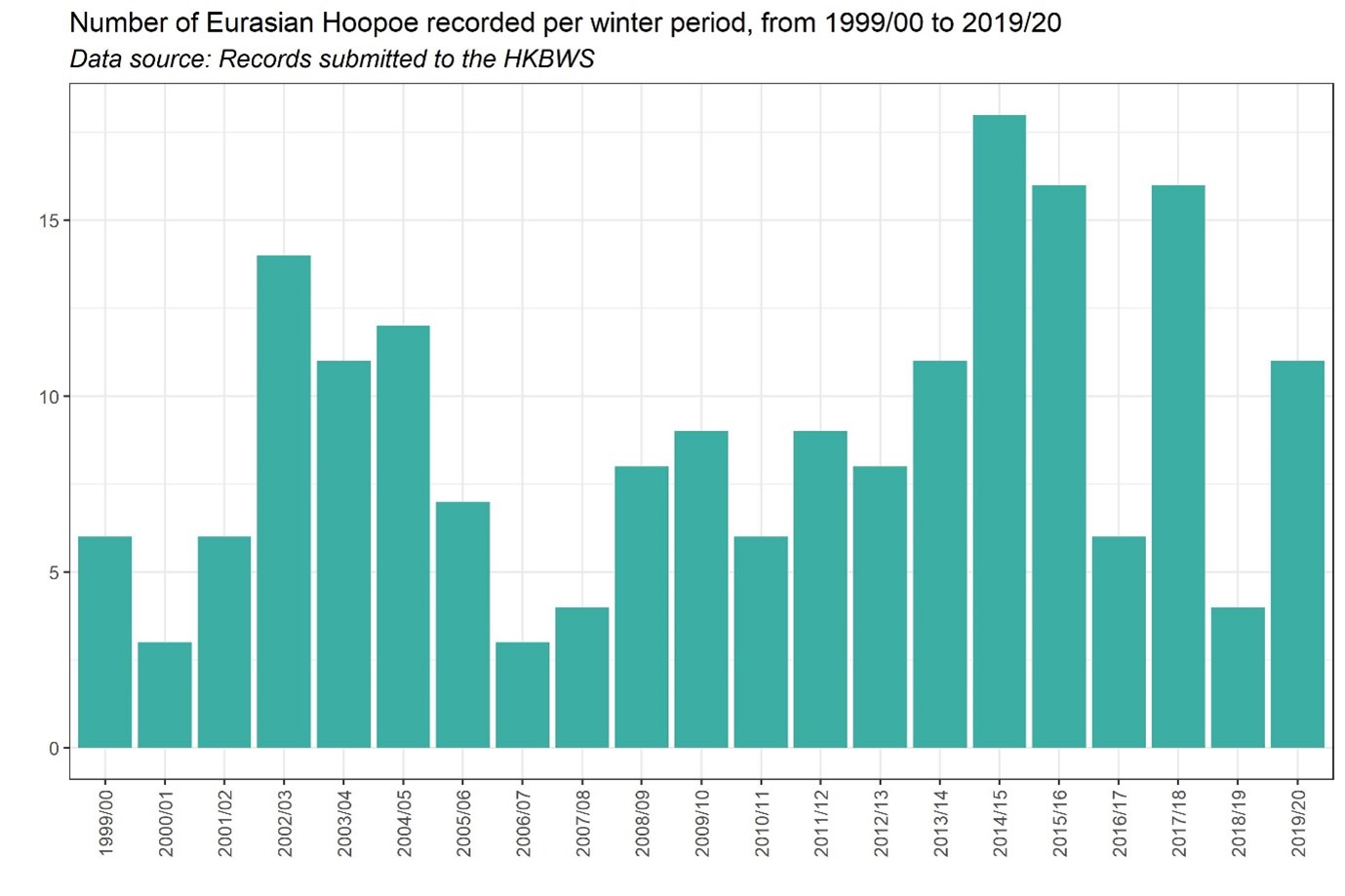Eurasian Hoopoe Upupa epops 戴勝
Category I. Scarce winter visitor and passage migrant to a variety of semi-open country habitats and village edge areas; rare in summer, with two breeding records.
IDENTIFICATION

Feb. 2005, Michelle and Peter Wong.
26-32 cm. Sexes alike. An unmistakable pinkish-buff to pinkish-grey bird with black- and white-striped, broad “butterfly” wings and a warm buff erectile crest tipped black and white (usually held flat). Tail black with broad central white band. Bill long, slender and narrowly decurved at the tip.
VOCALISATIONS
The song is a rather low-pitched and somewhat hollow ‘poop-poop-poop’, occasionally with a short flat introductory note.
DISTRIBUTION & HABITAT PREFERENCE
Eurasian Hoopoes are found in city parks and golf courses on well-watered lawns, active and abandoned agricultural land, fish pond edges and, occasionally, grassy hillsides with scattered pines. Most recent records are from the northwest New Territories, Lantau and Po Toi with occasional reports from the central and eastern New Territories, HK Island and Lamma.
OCCURRENCE
First recorded at Pok Fu Lam on 29 March 1940 (Herklots 1940), and then in 1958, 1962 and 1967, singles or occasionally two birds have been reported in most years since 1974 and annually since 1984. During the 1990s the number of individuals recorded each year varied between two and ten, with the majority records between September and April, most frequently from the beginning of November to the middle of February. This pattern has remained more or less the same (Figure 1). Wintering birds may remain in one area for several weeks or longer, e.g., one was present on Po Toi from 9 September 2014 to 8 February 2015.
Numbers are rather variable. From winter 1999/2000 to 2019/20, total winter period counts ranged from three (2000/01 and 2018/19) to 18 (2014/15), with single-digit total counts in 13 of the 21 seasons (Figure 2). Almost all records during this period were between 22 July and 25 April, although there were few records before the second week of September or after the end of March. There were no May records. There were, however, a total of four June records – all one-day reports of single birds.
BREEDING
Breeding occurred at two sites in the Kowloon area in 1993. A bare chick was found in a hole in a compacted, decomposed granite bank at Stonecutters Island on 9 April. The nest hole was possibly a former nest of White-throated Kingfisher.
The second breeding record was at King’s Park; here, a hoopoe took over the nest of a Tree Sparrow in a retaining wall weep hole, physically removing a young sparrow from the nest in the process. A young hoopoe was seen in the nest on 22 May and it fledged on 1 June (Melville 1994).
BEHAVIOUR, FORAGING & DIET
Feeds primarily on insects. Forages on the ground, often out in the open, probing into soft earth; also turns over leaves.
SYSTEMATICS & RANGE
Widespread from Africa and western Europe east through the Middle East and central Asia to southeast Asia, China and Japan. Six subspecies are recognised. The nominate form U. e. epops breeds in northwest Africa and Europe east to southern Russian Far East, China and Japan; western populations winter in Africa, while east Asian populations winter to south China, including HK, and southeast Asia. It is a widespread breeding visitor to central, east and northeast China, and a winter visitor south of the Yangtze River. U. e. longirostris is resident from northeast India east through Indochina to south China (Yunnan, southwest Guangxi and Hainan).
The east Eurasian population is treated as a distinct race U. e. saturata by some authorities (Krištín and Kirwan 2020), but not by the IOC.
CONSERVATION STATUS
IUCN: Least concern. Population trend decreasing.
Figure 1.

Figure 2.

Herklots, G. A. C. (1940). Notes and comments. Ornithology. Hong Kong Naturalist 10: 122-127.
Krištín, A. and G. M. Kirwan (2020). Eurasian Hoopoe (Upupa epops), version 1.0. In Birds of the World (J. del Hoyo, A. Elliott, J. Sargatal, D. A. Christie, and E. de Juana, Editors). Cornell Lab of Ornithology, Ithaca, NY, USA. https://doi.org/10.2173/bow.hoopoe.01
Melville, D. S. (1994). Breeding of the Hoopoe in Hong Kong. Hong Kong Bird Report 1993: 190-192.

